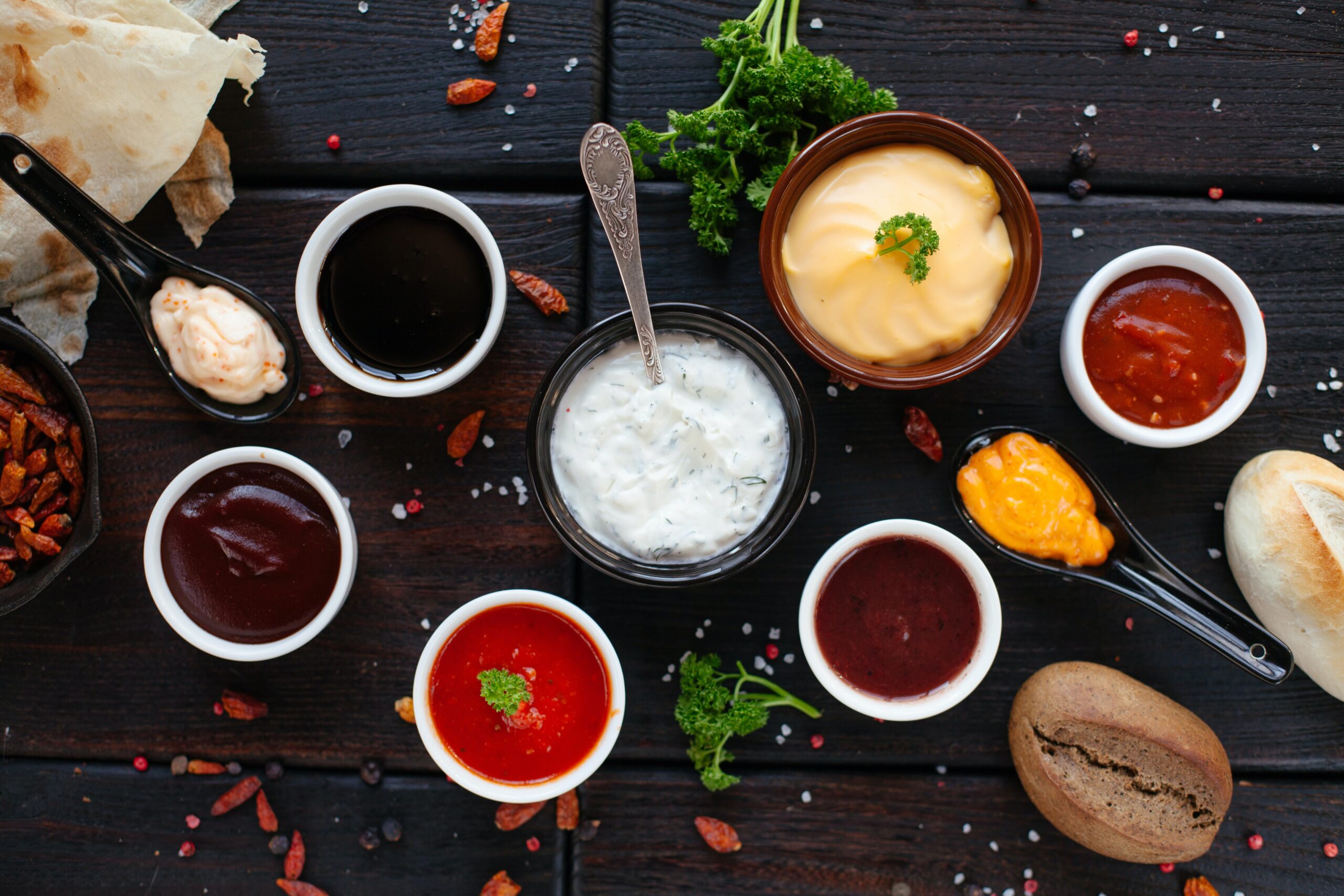In the world of cooking and entertaining, sauces and dips are often used interchangeably. However, there are distinct differences between the two so what is the actual difference between them.
A sauce is a liquid or semi-liquid condiment that is typically used to enhance the flavor of a dish, while a dip is a thicker, more substantial condiment that is meant to be scooped or dipped with a utensil or piece of bread or vegetable.
Additionally, sauces may contain high levels of sugar compared to dips though this is not always the case, for example, mushrooms sauce contains very little sugar, whereas caramel or chocolate sauces have high sugar content, whereas the majority of dips are savory dips like guacamole, salsa or hummus which usually have little or no sugar in them.

Can A Dip Be Used As A Sauce?
A dip can be used as a sauce. As mentioned above dips are thicker than sauces, however, they can also be thinned out. There are several ways to thin a dip, depending on the desired consistency and the ingredients in the dip. Here are a few common methods:
- Liquid: Adding liquid such as water, milk, cream, or broth to a dip can help to thin it out. The amount of liquid added will depend on the desired consistency, and it’s best to add small amounts at a time and stir well before adding more.
- Yogurt or sour cream: Adding yogurt or sour cream to a dip can help to thin it out and make it creamier. This method is particularly useful for dips that are high in fat content.
- Lemon or lime juice: Adding a small amount of lemon or lime juice can help to thin a dip and add a burst of flavor. This method works well for dips that are high in salt content.
- Vinegar: Adding a small amount of vinegar can help to thin a dip and add a tangy flavor. This method works well for dips that are high in fat content.
- Herbs and Spices: Adding fresh herbs or spices to a dip can help to thin it out and add flavor. This method works well for dips that are high in fat content.
It is important to keep in mind that thinning a dip will also change its flavor. It is best to add the thinning agent in small amounts and to taste the dip before adding more. Additionally, it is also important to note that some dips might not be suitable for thinning, such as dips that are based on cheese or eggs, as they can break or change texture.

How Can You Thicken A Sauce?
There are several ways to thicken a sauce, depending on the desired consistency and the ingredients you have on hand. Here are a few common methods:
- Cornstarch or flour: Cornstarch or flour are common thickeners that can be mixed with a small amount of cold water to create a slurry, which is then slowly added to the sauce while whisking constantly. The sauce should be brought to a simmer to activate the thickening properties.
- Roux: A roux is a mixture of butter and flour that is cooked for a few minutes before being added to the sauce. This method works best for thickening sauces that are based on butter or oil, such as gravy or alfredo sauce.
- Pureed vegetables or fruits: Pureed vegetables or fruits such as potatoes, squash, or berries can be added to a sauce to thicken it.
- Reduced liquid: Reducing the liquid in a sauce by simmering it for a longer period of time can also help to thicken it. This method works well for sauces that are high in water content, such as a tomato sauce.
- Egg yolks: Whisking in egg yolks can also help to thicken a sauce. This method is typically used for sauces that are high in fat and low in acid, like a hollandaise sauce.
These methods of thickening will also change the flavor and therefore needs to be done with caution.

How To Store Sauces And Dips?
Proper storage is essential to maintaining the quality and safety of sauces and dips. Here are some tips for storing sauces and dips:
- Refrigeration: Most sauces and dips should be stored in the refrigerator, as they can spoil quickly at room temperature. Make sure to cover them tightly with a lid or plastic wrap to prevent contamination and to keep them from drying out.
- Freezing: Some sauces and dips can be frozen to extend their shelf life. However, it is important to note that some ingredients may not freeze well, such as mayonnaise or sour cream, so it is best to consult a recipe or package instructions before freezing.
- Shelf-Life: Most sauces and dips will last for about 3 to 4 days in the refrigerator, but it is always best to check the expiration date or the “use-by” date on the package. Homemade sauces and dips usually have a shorter shelf life than store-bought.
- Label and date: It is always a good idea to label and date your sauces and dips, especially if you have multiple containers in your fridge or freezer.
- Temperature: Make sure the temperature inside the fridge is around 40°F or below, and the freezer is at 0°F or below, to ensure that the sauces and dips are kept at a safe temperature.
It is also important to note that if you notice any signs of spoilage such as mold, off smell or discoloration, it is best to discard the product.
Relevant Articles
What Is The Difference Between Pancakes and Hotcakes?
What Is The Difference Between Beans And Nuts?
Are Red Chillies Hotter Than Green? Does Their Color Make A Difference?

Comments are closed